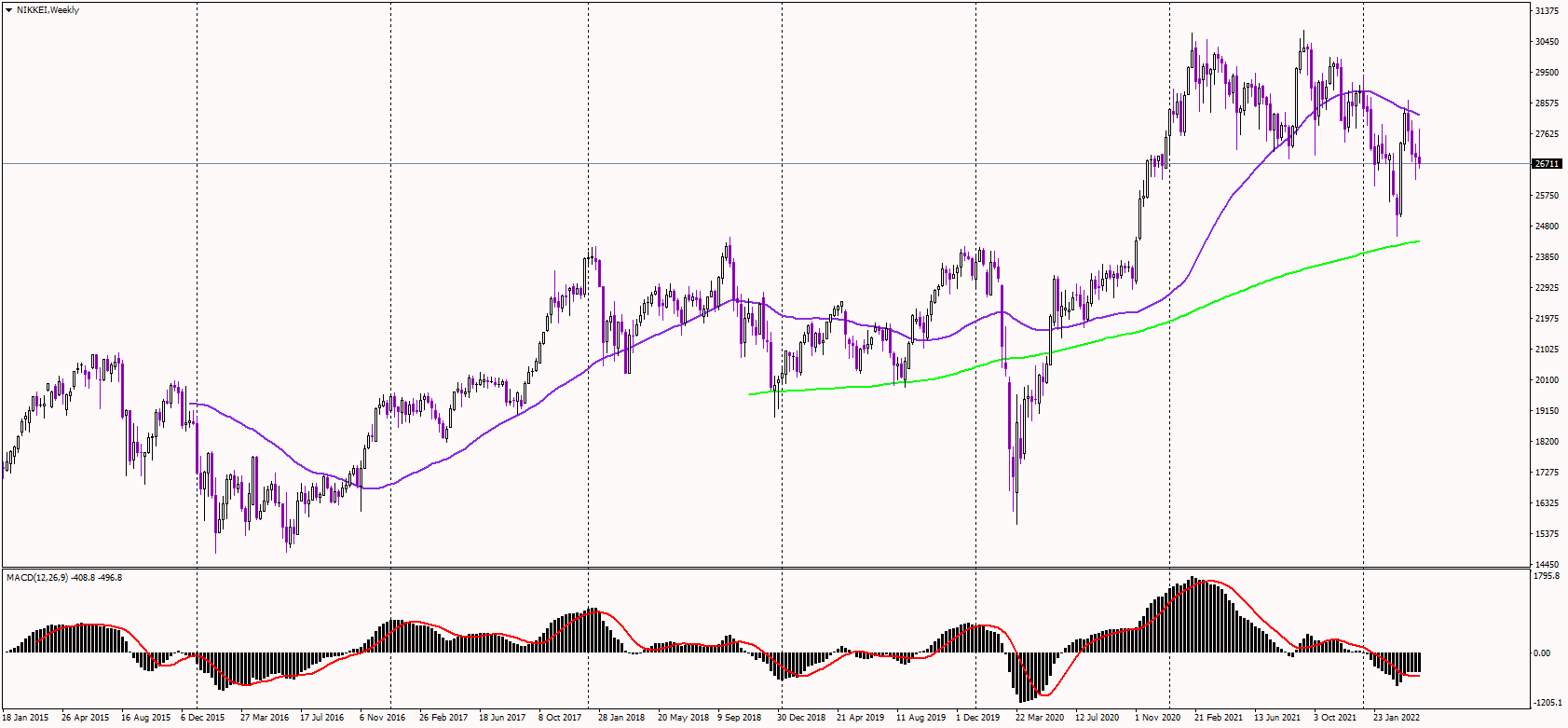Nikkei 225 Performance and Trends
The performance of the Nikkei stock index has been heavily influenced by the Bank of Japan's (BOJ) monetary policies. Between 2013 and 2017, the BOJ held around 75% of all Japanese Exchange-Traded Funds (ETFs) and was a top 10 shareholder in 90% of the Nikkei 225 companies.
As a result, the Nikkei 225 surpassed the psychological level of 30,000 JPY in February 2021, reaching a 30-year high. However, it has since experienced lower lows and lower highs, indicating a potential bearish trend. Despite this, the index remains 50% higher compared to its January 2015 levels. While the Nikkei index underperforms U.S. equities, short-term traders appreciate its volatility.

Source: Purple Trading Metatrader 4
Nikkei 225 - quotes and trading
You can trade the technology index - Nikkei 225 index in our Purple Trading platforms MetaTrader 4 and MetaTrader 5 or cTrader platform. First, find the ticker NIKKEI in the MetaTrader 4 platform and press the new order button. The following window will pop up.

Source: Purple Trading Metatrader 4
Understanding Lot Value Calculation
When trading the Nikkei 225, understanding lot values is essential:
- One micro lot (0.01) = Smallest tradable unit.
- One mini lot (0.1) = A 100 JPY move equals a gain/loss of 10,000 JPY.
- Half a lot (0.5) = A 100 JPY move equals a gain/loss of 50,000 JPY.
For example, if you buy 0.5 lots at 27,000 JPY and the Nikkei 225 rises to 27,100 JPY, your profit will be 50,000 JPY (100 JPY movement * 500 JPY per point). The same logic applies when shorting the Nikkei stock index.
Currency Considerations
The Nikkei index is denominated in Japanese Yen (JPY). If your trading account is in EUR or USD, your profits or losses will be converted based on EUR/JPY or USD/JPY exchange rates. Be sure to check the latest exchange rates when calculating potential earnings or losses.
Key Takeaways
- The Nikkei 225 index is a price-weighted stock index representing 225 major Japanese companies.
- Fast Retailing Ltd has the highest influence, even though companies like Toyota Motor Corp have a larger market capitalization.
- The index is heavily influenced by the Bank of Japan's monetary policies.
- You can trade the Nikkei market index on MetaTrader 4 and cTrader platforms. It is denominated in JPY, and currency conversions may affect profits and losses.